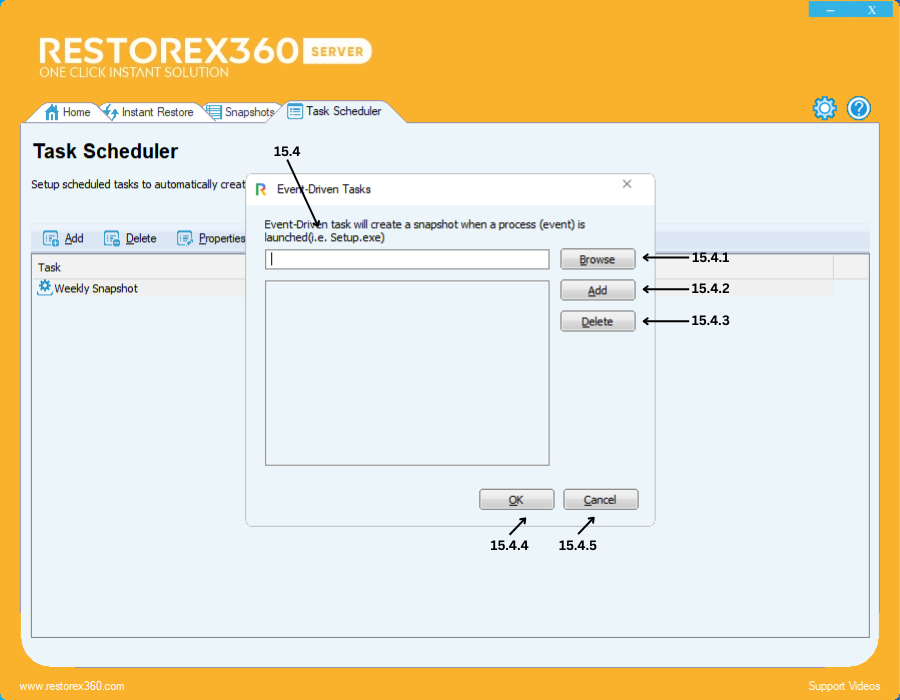5.6. Event-Driven Tasks - Task Scheduler
What is an Event-Driven Task?
An Event-Driven Task is a special type of task that is triggered automatically when a specific process or event occurs on the system - rather than at a scheduled time.
How It Works:
-
When a predefined process or application is launched (e.g., setup.exe, installer.exe, or any other program), the system automatically creates a snapshot of the current state.
-
This ensures that if anything goes wrong during or after the execution of that process, you can instantly roll back to the exact system state before the event occurred.
Example:
-
Suppose you are installing new software, and the installer file is named setup.exe.
-
An Event-Driven Task is configured to create a snapshot whenever setup.exe runs.
-
If the installation causes system issues or crashes, you can easily rollback to the state before the installation began.
Why Use Event-Driven Tasks?
-
📦 Automatic protection before risky actions
-
⚙️ No manual intervention needed
-
🛡️ Helps maintain system stability
-
⏱️ Faster recovery after unwanted changes
💡 Ideal for IT environments, testing labs, or any system where software installations or updates are frequent and unpredictable.

15.4: Creating Event-Driven Tasks
You can configure RestoreX360 to automatically create a snapshot whenever a specific executable file (e.g., setup.exe, installer.exe, etc.) is launched. This ensures system protection before any installation or process begins.
Steps to Configure:
15.4.1 – Click on “Browse” and select the .exe file or any other file extension you want to monitor.
Example: Selecting setup.exe will create a snapshot automatically each time that file runs.
15.4.2 – After selecting the file, click on “Add” to include it in the list of monitored processes.
15.4.3 – To remove a previously added task, select it from the list and click on the “Delete” button.
15.4.4 – Click “OK” to save the configuration and activate the event-driven task.
15.4.5 – Click “Cancel” if you do not wish to save the task and want to close the dialog.
💡 This feature is highly useful for automatically protecting your system before software installations, updates, or any critical processes.
